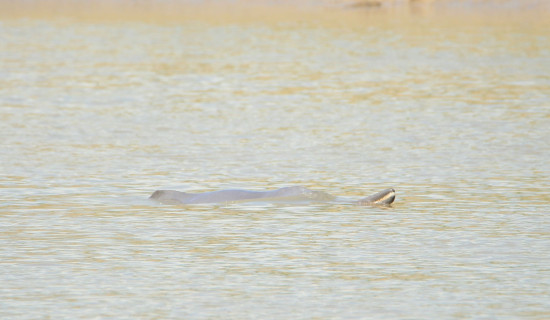- Friday, 9 January 2026
Mosses Help Fight Climate Change
Plants, especially trees, are among the reliable carbon managers in land-based ecosystems. They play a crucial role in mitigating climate change by absorbing and transforming greenhouse gases, such as carbon dioxide and carbon monoxide. For example, a tree can store over a tonne of carbon in the form of wood and roots. Interestingly, there is also a miniature plant, moss, which acts as an ally in the fight against climate change. While often these are overlooked, mosses play a surprisingly powerful role in sequestering carbon from the atmosphere. These are present on the forest floor, forming a soft, thick green blanket.
Botanically, mosses are small, non-vascular herbaceous plants belonging to the division Bryophytes, which lack true roots and stems, and mostly have structures like rhizoids for anchorage and absorption. As climate change accelerates, these tender plants provide clues on how to enhance the resilience of forests for climate protection. Research indicates that soil covered with mosses contains approximately 6.43 billion metric tonnes more carbon compared to bare soils without any plants in global semi-arid regions. This is equivalent to six times the annual global carbon emissions from land use changes like deforestation, industrialisation, mining, urbanisation, and so on.
Ecological balance
The decomposition of dead mosses contributes to the soil organic matter formation, which improves physical characteristics like soil structure, density and aeration. Mosses provide habitat to plants and numerous microbial organisms, thus retaining the biodiversity and maintaining the ecological balance. They have high soil water retention capacity, which may be one of the reasons for the soil protection against erosion and hence maintain the soil health.
Mosses also support many ecosystem services where vascular plant cover is minimal. Furthermore, the numerous dense and fibrous roots on the forest floor create a heterogeneous soil pore distribution, which regulates the soil moisture, reduces evaporation and surface run off, and stabilises the microclimate. Mosses are widely distributed across the globe and can thrive in extreme conditions, including sandy or salty soils and under highly variable precipitation patterns. Mosses do matter because, like large trees, they absorb and act as a sink of carbon even in harsh environments. Together, both small and large plants help store carbon around the world.
Nepal is home to a rich diversity of forest ecosystems ranging from tropical forests in the south (Tarai) to alpine coniferous forests in the north (Himalayan region). The dramatic variation in Nepali physiographic conditions, ranging from 60 to 8848 meters above mean sea level (amsl), provides habitat to different species of mosses. So far, mosses in Nepal have been recorded between the altitudes of 62 to 6000+ meters amsl. The botanical surveys have indicated the presence of mosses from Rara National Park (~2900 m), Langtang Valley (~3000+ m), Makalu Barun and Sagarmatha regions (~5000+).
The species composition and distribution of these herbaceous plants are influenced by factors like elevation, habitat and moisture levels. According to a study published by Nirmala Pradhan in 2023, there is a record of 1318 species of Bryophytes in Nepal, which included 11 species of hornworts, 541 species of liverworts and 766 species of mosses. However, there is a lack of comprehensive studies of these mosses from the aspect of soil stability, soil erosion control and carbon sequestration.
Despite the growing global interest in mosses on the forest floor acting as carbon sinks, they are rarely studied in research and discussions. In Nepal, comprehensive researches need to be conducted on moss species diversity, their ecological contribution, including their roles in soil stabilisation and nutrient cycling. While some research studies have explored the botanical composition and resource availability, significant knowledge gaps remain regarding their roles in climate change, carbon sequestration and soil moisture retention in Nepal. Investigating these aspects could be pivotal for understanding nutrient dynamics and can be a key strategy to combat soil erosion and landslides, which are of critical concern in the mountainous landscapes of Nepal.
Species in Nepal
Sphagnum nepalensis, Nordia nepalensis, Entodon nepalensis, Diplophyllum trollii are some of the endemic mosses found in Nepal. In addition, Entodon concinnus subsp. caliginosus and Hypnum subimponens subsp. Ulophyllum, previously recorded from Nepal and other regions, is now considered part of the western Himalayan bryoflora. Some of the mosses in the southeast part of Nepal are Fissidens, H. Involute, Riccia, Garckea flexuosa (Ditrichaceae), Herpetineuron toccoae (Thuidiaceae) and Trematodon longicollis.
Since 2000, the International Union for Conservation of Nature (IUCN) has listed ninety-two bryophyte species from Nepal on the Red and Threatened List, which also includes those endemic to Nepal. Several factors contribute to the red listing of moss species, some of which are climate change, wildfires, over-harvesting, habitat fragmentation, urbanisation, invasive species, changes in land management, pollution, deforestation, extreme environmental conditions and highly variable rainfall patterns.
(An Assistant Professor in Soil Science at the Tribhuvan University, Institute of Forestry, Parajuli is currently pursuing a PhD on mosses and soil carbon dynamics at Tuebingen University, Germany. )

















